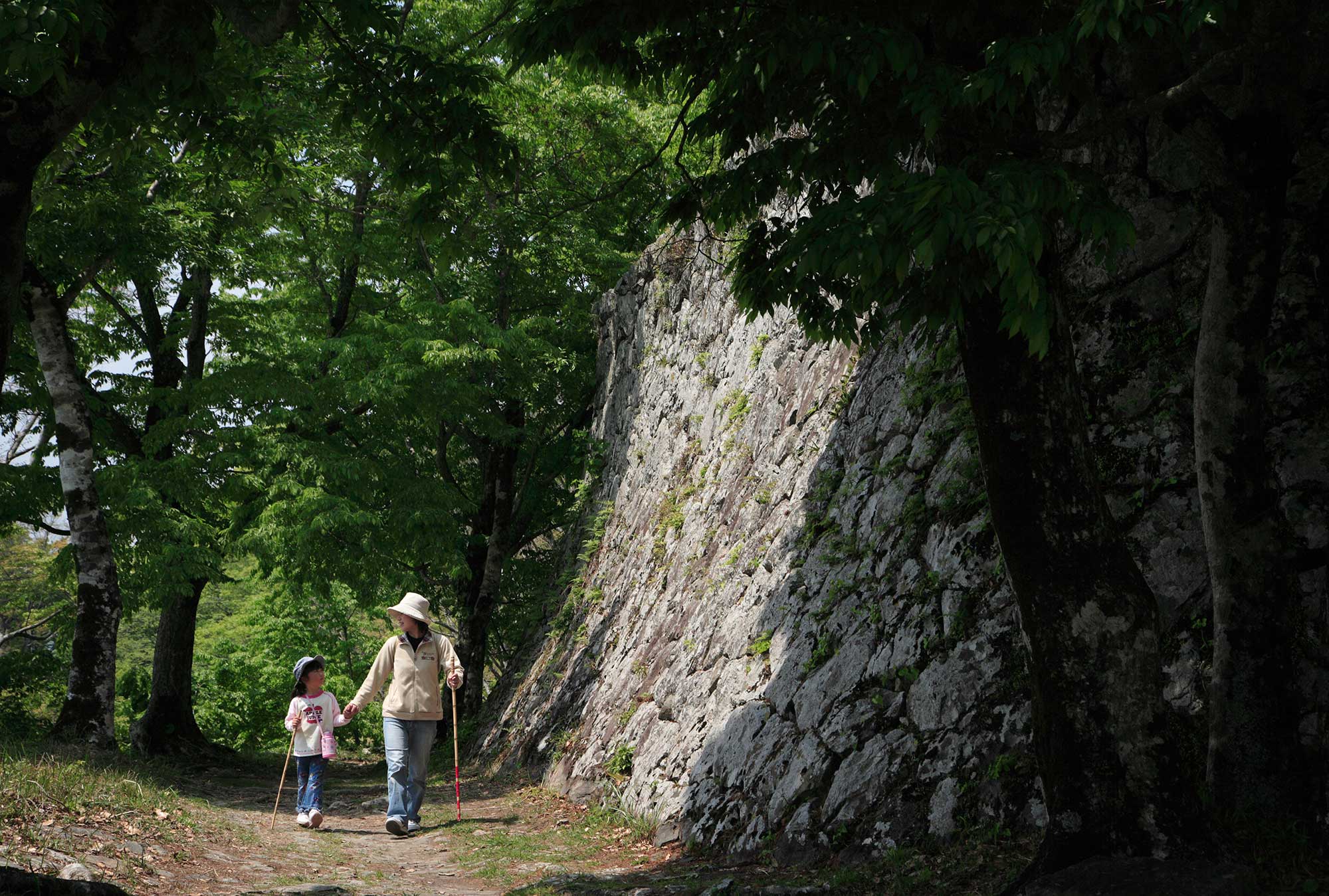

- Kennan Area
- Ruins・Ruined Castle
Mount Shiro
Photography/TAKEUCHI Yasunori
Memorial Place of Doppo
Mount Shiro is a symbol of City of Saiki, where the hearts of the residents reside. Doppo Kunikida writes in a part of his poem “Bungo no Kuni Saiki” as below.
“The spring of Saiki first comes to Mount Shiro, the summer first comes on Mount Shiro, and the autumn also arrives first on Mount Shiro, and in the winter the sound of cold wind is first heard in the forest of Mount Shiro. When Mount Shiro is quiet, Saiki is silent. When there’s noise in Mount Shiro, so is Saiki. Saiki belongs to Mount Shiro.”
The 144-meter Saiki Castle (also known as Tsuruya Castle or Tsuruga Castle) was built by Takamasa Mouri in 1601, which he took over the clan with 20,000 koku (unit of volume of rice produced on the land). At first he resided in the Togamure Castle, which used to be owned by the medieval Saeki clan, however it was a traditional mountain castle. He preferred a location closer to the sea for watching over his territories in a new era, and a few years later he selected a mountain then called Mount Hachiman to be his new castle, building a castle town in what was called Shioya Village on the foot of the mountain.
The Shioya Village at that time was known for its salt production in the Banjou River Delta, which was called “Shioya Sengen (meaning a thousand salt stores).” They used the material from Togamure in their new castle, as well as cleverly utilizing the complex flow of the Delta to make their defensive moat, and moved the castle town of Togamure into the new town. The castle was complete almost 10 years after Mouri entered the land, with the exterior gate and moat looking like a crane spreading its wings. The castle town was developed a little later, but with a lot of thought put into the roads from the samurai’s residence to the district where merchants and artisans lived, the town was organized nicely on the southern part of the city today.
The Shioya Village at that time was known for its salt production in the Banjou River Delta, which was called “Shioya Sengen (meaning a thousand salt stores).” They used the material from Togamure in their new castle, as well as cleverly utilizing the complex flow of the Delta to make their defensive moat, and moved the castle town of Togamure into the new town. The castle was complete almost 10 years after Mouri entered the land, with the exterior gate and moat looking like a crane spreading its wings. The castle town was developed a little later, but with a lot of thought put into the roads from the samurai’s residence to the district where merchants and artisans lived, the town was organized nicely on the southern part of the city today.
The current Sannomaru, where the Civic Center is located, is the government of the later era, with a Sannomaru Yagura Gate (Black Gate) which is a Prefectural Cultural Property. Yamagiwa Road, which extends from this area, is the center of the samurai district, and at the end of the district lies the temple of the Mouri clan, Youkenji Temple. In addition, the house where Doppo stayed and the remains of the birthplace of Ryukei Yano are also preserved, collectively called “The Road of History and Literature,” which was selected as one of “The 100 Roads of Japan.”
It was only a year in his youth when Doppo spent his time in Saiki, but he was exposed to the nature and watched the people, making it a starting point of his literary career. One of his favorite places was Mount Shiro. His masterpiece “Haru no Tori (Spring Birds)” was also set here. Most of the stone walls and nature that used to surround the castle still remains, and many citizens enjoy climbing the mountain daily.

Mount Shiro looking up from the side of Banjou River.

